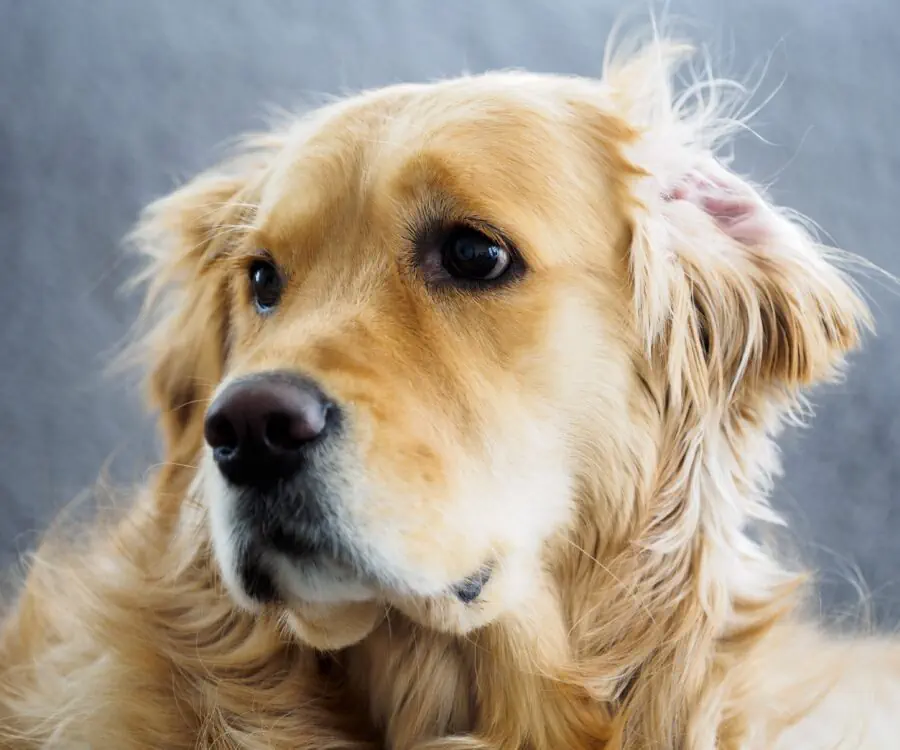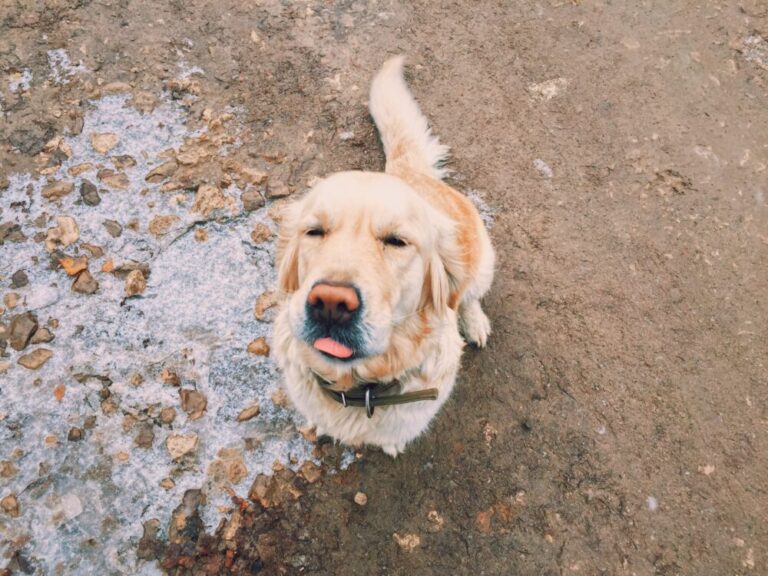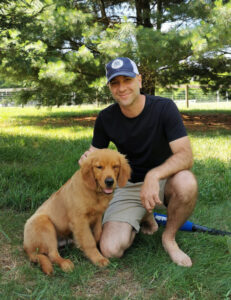Golden Retriever Coat Stages: Shedding, Grooming & Maintenance Guide

Golden Retrievers are one of the most beloved dog breeds, known for their friendly personalities, loyalty, and beautiful coats. From their early days as fluffy puppies to their adult years, the Golden Retriever coat goes through several stages of development. Each stage requires proper care to ensure a healthy and beautiful coat.
Understanding Your Golden Retriever’s Coat
If you own a golden retriever, it’s important to understand their beautiful coat to ensure proper care and maintenance. This breed has a double coat consisting of a dense undercoat and a long, wavy outer coat. The double coat serves as insulation, keeping your dog cool in warmer temperatures and warm in colder weather.
Golden retrievers shed moderately throughout the year, with heavier shedding occurring during seasonal changes. Regular grooming is essential to avoid matting and keep their coat healthy and shiny. Brushing your pet’s coat at least weekly can help reduce shedding and remove any loose fur. You can also consider using a deshedding tool during heavy shedding to manage the excess fur.
Grooming not only affects your dog’s appearance but can also impact their health and behavior. Neglecting your pet’s coat may lead to skin problems and even affect your dog’s behavior. When the coat is not properly cared for or matted, it can become uncomfortable, leading to uncharacteristic mood changes.
The Puppy Coat
Golden retrievers are known for their soft, fluffy fur, especially during their puppy stage. At this early stage, their coat is still developing and growing.
Their puppy coat is designed to keep them warm and protect their sensitive skin. It’s also essential for their overall health and development. As your golden retriever grows and their body changes, their puppy coat will shed and make way for an adult coat.
During the shedding process, it’s important to maintain regular grooming. This can help remove dead fur and prevent matting or tangles. Consistent grooming can also create a bonding experience with your pup, helping them feel more comfortable and relaxed.
To manage shedding, try a slicker brush or undercoat rake. These tools can reach the undercoat and remove excess fur that leads to shedding. It’s also important to maintain a healthy diet with supplements such as Omega-3 fatty acids to support coat health.
Overall, the puppy coat stage is a crucial part of a golden retriever’s development. With proper grooming and care, your pup’s soft fur will help them stay comfortable and healthy as they grow.
Transitioning to the Adult Coat
Golden retrievers have a beautiful coat that changes as they grow from a fluffy pup to a gorgeous adult. During the transition, their hair gradually becomes longer and their color may change. It is important to note that shedding is a natural part of this phase.
Hair Length
As golden retrievers mature, their hair will grow longer. In some cases, this can result in the development of feathering around their ears, chest, and legs. While this is a beautiful characteristic of the adult coat, it requires regular maintenance and grooming to maintain the desired appearance.
Color Change
The color of a golden retriever’s coat may also change during their transition to adulthood. For example, a puppy with a light coat may develop darker hair over time. Similarly, a puppy with a reddish coat may develop a golden hue. These changes are normal and should not cause alarm.
Shedding
Shedding is a common occurrence during the transition to the adult coat. Most golden retrievers will have a heavier shedding cycle during this phase. To manage shedding, regular brushing and grooming are essential. It is also important to maintain a healthy diet, as some foods can contribute to excessive shedding.
In conclusion, the transition from the puppy coat to the adult coat in golden retrievers is an exciting process that leads to the development of a beautiful coat. With proper care, including regular brushing and grooming, this transition can be smooth and seamless, ensuring a healthy and happy dog.
Caring for the Adult Coat
As your golden retriever enters adulthood, their coat requires proper care to maintain its health and beauty. Regular brushing is essential to remove loose fur, dirt, and tangles that may lead to matting. Bathing every 1 to 3 months using dog-specific shampoo helps keep the coat clean and fresh.
Trimming is another important aspect of caring for the adult coat. While golden retrievers do not require frequent haircuts, trimming longer hair around the ears, feet, and tail can help prevent matting and keep the coat tidy.
It’s important to use high-quality grooming tools such as slicker brushes, combs, and scissors to avoid damaging the coat or causing discomfort to your dog. Brushing your golden retriever’s coat provides an opportunity to bond with your pet while promoting their overall health.
Seasonal Coat Changes
Golden retrievers are a breed that can adapt to different climates thanks in part to their double-layered coat. However, seasonal changes may still affect their shedding and coat growth patterns. During the colder months, golden retrievers may develop a heavier undercoat that effectively insulates them against the cold, while shedding less of their outer coat to keep warm.
As the weather warms up, the undercoat will start to shed, and the topcoat will grow longer. This transition may result in a higher incidence of shedding and may require more frequent grooming sessions at home or with a professional.

It’s important to be aware of your golden retriever’s shedding patterns and adjust grooming habits accordingly. Regular brushing and bathing, along with a healthy diet and supplements if needed, can help manage shedding during these transitions and keep your dog comfortable and healthy.
Dealing with Shedding
Golden Retrievers are known for their gorgeous coats, but shedding can be a frustrating issue for their owners. Fortunately, there are several effective ways to manage shedding, including using appropriate grooming tools, maintaining a healthy diet, and considering supplements as part of a shedding management plan.
Using Grooming Tools
Regular grooming is key to preventing excessive shedding. Using the right tools, such as a slicker brush or a shedding tool, can help remove loose hair and prevent matting. Be sure to brush your golden retriever’s coat at least once a week to keep it healthy and shiny.
Maintaining a Healthy Diet
A balanced diet is critical to healthy skin and coat. Feeding your golden retriever a high-quality, nutrient-rich diet can help reduce shedding and other coat-related issues. Omega-3 fatty acids, found in fish oil, can also improve coat health and reduce shedding.
Considering Supplements
Supplements can be a helpful addition to a shedding management plan. Vitamins and minerals, such as biotin and zinc, can improve coat health and reduce shedding. Consult with your veterinarian to determine the best supplements for your golden retriever.
By incorporating these tips into your golden retriever’s care routine, you can manage shedding and maintain a healthy, beautiful coat for your furry friend.

Coat Health and Common Issues of Golden Retrievers
As a responsible owner, it is crucial to prioritize your golden retriever’s coat health. Different issues can arise, which requires specific remedies or preventive measures. In this section, we will discuss some of the common coat-related problems that your dog may experience, including dry skin and allergies.
Dry Skin
Dry skin is a common issue for golden retrievers, which can cause discomfort and even lead to skin infections. Some of the most common causes of dry skin include weather changes, lack of moisture, or bathing with harsh shampoos. To tackle this problem, you can try adding a moisturizer to their diet or a supplement that promoted skin health. Additionally, bathing with mild shampoos and avoiding harsh chemicals can keep skin dryness at bay.
Allergies
Golden retrievers are susceptible to allergies, which can manifest as skin problems, itching or rashes. Common allergens include food, dust mites, and pollen. To avoid allergies, proper grooming is essential, as frequent brushing can often remove common allergens from the coat. It is also advisable to feed your dog a quality diet and avoid processed foods whenever possible. If allergies persist, consult a veterinarian for more specialized advice and treatment.
Preventive Measures
Maintaining a golden retriever’s coat health requires care, attention to detail, and preventive measures. Regular grooming, feeding with high-quality food, and maintaining an allergen-free environment can go a long way in preventing most of the common coat-related issues faced by golden retrievers. If problems persist, always consult a professional to take timely action.
Professional Coat Care for Golden Retrievers
While regular maintenance is essential, sometimes your golden retriever needs a professional touch. Professional grooming services can provide thorough inspections, early detection of health issues, and tailored grooming plans that meet breed and coat-specific needs.
Brands such as Grooming Services offer a range of grooming options, such as de-shedding, deep conditioning, and unique haircuts – all performed by experienced professionals with a love for dogs.
In addition to grooming services, taking your golden retriever to a veterinarian regularly for checkups can help maintain the dog’s coat along with its overall health and well-being.
Remember, a healthy and stylish golden retriever coat requires more than regular brushing and bathing. Consider giving your furry friend the gift of professional, specialized coat care options.
What if My Golden Retriever Loves to Swim?
Golden Retrievers are renowned for their love of water, and this can have specific implications for their coat care. If your furry friend is a swimming enthusiast, it’s crucial to understand how regular dips can affect their coat and skin.
After-Swim Care: The first step after your Golden Retriever has enjoyed a swim is to rinse them off with fresh water. This helps to remove chlorine, salt, or natural debris from their coat, which can otherwise dry out or irritate their skin. A thorough rinse also prevents the coat from becoming matted or tangled.
Drying Techniques: Proper drying is key. While it’s tempting to let your dog ‘air dry’, this can lead to matting, especially in the dense undercoat. Use a towel to gently blot the coat, removing excess water. For a deeper dry, especially in colder weather, a blow dryer on a cool setting can be used, keeping it at a safe distance to avoid heat damage.
Regular Brushing: Swimming can accelerate shedding and tangling. Incorporating regular brushing sessions after swims helps prevent mats and tangles. Use a slicker brush and an undercoat rake to gently work through their fur, paying special attention to areas prone to matting like behind the ears and under the legs.
Skin Check: Regular swimmers need frequent skin checks. Look for signs of dryness, redness, or irritation, particularly in areas where water can linger like the ears and underbelly. If you notice any skin issues, consult your vet for advice on appropriate care.
Swimming Frequency and Coat Health: While swimming is excellent exercise and fun for your Golden Retriever, balance is key. Excessive exposure to water can strip natural oils from their coat, leading to dryness and irritation. Balance their swim sessions with dry days to maintain a healthy coat and skin.
By following these care tips, you can ensure that your Golden Retriever’s love for swimming contributes positively to their overall well-being and coat health. Remember, a well-maintained coat not only looks great but is also a sign of a happy, healthy dog.
Special Care for Senior Golden Retrievers’ Coat
As Golden Retrievers enter their senior years, their coat requires special attention to maintain its health and appearance. Aging can bring changes in texture, thickness, and the overall condition of their fur. Here are essential tips for caring for your senior Golden Retriever’s coat.
Gentle Grooming:
- Use a soft-bristle brush.
- Regular, gentle brushing to remove loose fur and stimulate blood circulation.
Moisturizing and Nourishment:
- Opt for moisturizing shampoos.
- Consider supplements for skin and coat health, like omega fatty acids.
Spot Cleaning and Mat Prevention:
- Clean dirty areas as needed.
- Pay attention to areas prone to matting, like underbelly and rear.
Health Check-Ups:
- Regular vet visits to monitor skin and coat health.
- Check for skin changes, lumps, or bumps.
Comfortable Grooming Sessions:
- Provide a comfortable grooming space.
- Consider shorter grooming sessions.
Reduced Shedding Management:
- Regular brushing to manage shedding and tangle prevention.
Implementing these care strategies ensures a healthy and comfortable coat for your senior Golden Retriever, contributing to their overall wellbeing in their later years.
Conclusion
Properly caring for your Golden Retriever’s coat through its various stages is key to ensuring a healthy and beautiful appearance. From the soft, shed-prone puppy coat to the thicker adult coat, regular grooming and attention to shedding are crucial. Seasonal changes may require adjustments in care, and it’s important to address any skin issues or allergies. Incorporating professional grooming and seeking advice from veterinarians can greatly benefit your dog’s coat health. By dedicating the right care and attention, you’ll keep your Golden Retriever’s coat in top condition, ensuring their comfort and happiness.
Frequently Asked Questions About Golden Retriever Coat Stages
At what age do Golden Retrievers get their full coat?
Golden Retrievers typically achieve their full adult coat between 12 and 18 months of age. During this time, their coats will become thicker and gain their distinctive feathering. Puppies initially have a softer, fluffier coat that gradually transitions to the adult coat.
What should a Golden Retriever coat look like?
A healthy Golden Retriever coat should be dense and water-repellent with a rich, golden color. The coat may have slight waves and should have good feathering on the neck, legs, thighs, underside, and tail. It’s important for the coat to be well-groomed to maintain its appearance and health.
What is the hardest age for a Golden Retriever?
The most challenging age for a Golden Retriever is often the adolescent phase, around 6 to 18 months. During this stage, they can be very energetic, easily distracted, and may test boundaries. Consistent training and positive reinforcement are key to managing their behavior during this time.
Do Golden Retrievers like water?
Most Golden Retrievers love water and are natural swimmers. This breed is known for its affinity for swimming, partly due to their water-repellent coat and webbed feet. However, individual preferences may vary, and it’s important to introduce water activities safely and gradually.
At what age do Goldens calm down?
Golden Retrievers typically start to calm down around 2 to 3 years of age. As they mature out of the puppy and adolescent stages, they tend to become less hyperactive and more settled in their behavior. Regular exercise and mental stimulation continue to be important for their well-being.

Galen Kauffman has been connecting quality Golden Retriever breeders with loving families since 2012. He is the founder of My Golden Retriever Puppies. Galen and his wife have four children and enjoy spending time together, traveling (including 4 years living overseas), exploring the outdoors, and building lasting connections within the Golden Retriever community.
